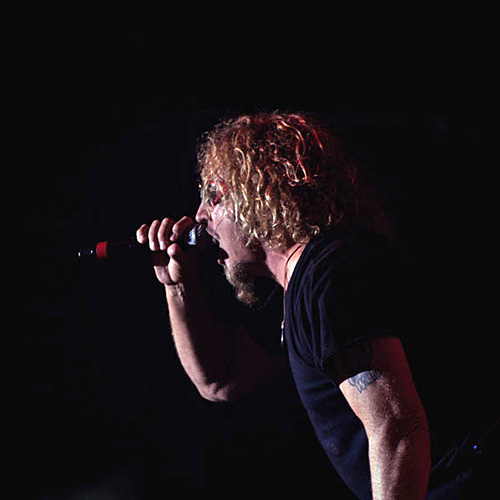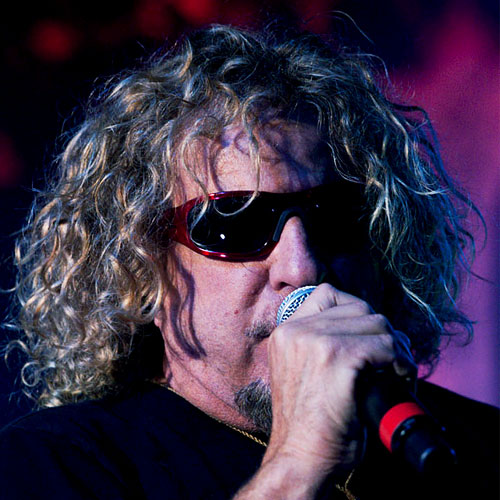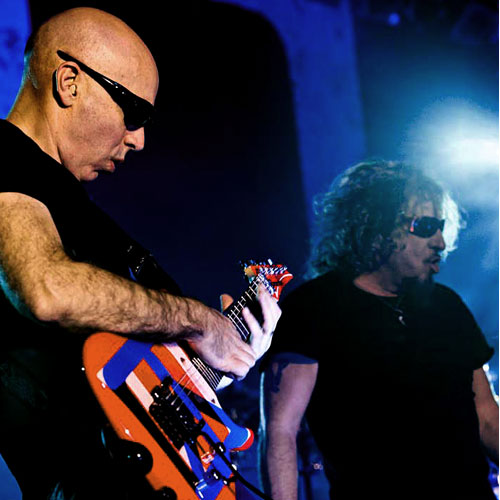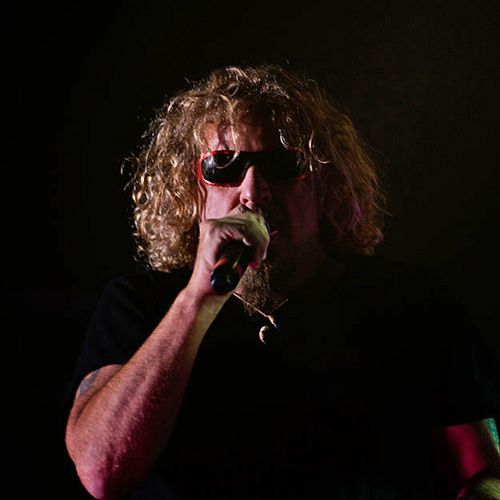Sammy Hagar and Friends LP
Biography
Early years (1967-1973): Hagar became interested in the burgeoning Southern California music scene, fronting his first band, the Fabulous Castilles.
In 1967, the duo known as Samson & Hagar, backed by the Peppermint Trolley Co., released a 7″ promotional record on Ranwood Records with the tracks “Reach Out to Find Me” and “Read My Thoughts”.
Later that same year, Hagar joined the Johnny Fortune Band as a vocalist and rhythm guitarist. Hagar was also a member of a string of other pre-Montrose bands including Big Bang, Skinny, Dustcloud, Cotton, Jimmy, and Manhole.[8] Hagar then became a member of the Justice Brothers along with guitarist Bob Anglin, keyboardist Al Shane, bassist Jeff Nicholson, and drummer David Lauser. The Justice Brothers were the house band at a bar called “The Nightclub” in San Bernardino, California, before relocating to San Francisco.
Montrose (1973–1975): Hagar’s first major success came from his work with the group Montrose on their debut and second albums, including the first song Hagar wrote, “Bad Motor Scooter”. After difficulties with the band’s founder, Ronnie Montrose, during a European tour, Hagar departed from the group. Bassist Bill Church (who had quit Montrose after the first album) and drummer Denny Carmassi would eventually find themselves playing in Hagar’s backing band. After the album Paper Money, Hagar left Montrose for a solo career.
Solo (1976–1987): In the mid-1970s, Hagar started a solo recording and touring career to increasing success. He enjoyed moderate success on Capitol Records under the tutelage of A&R man Carter, with such albums as Nine on a Ten Scale and hits such as “Red”, which would build his persona and style, leading to his nickname of “The Red Rocker”. However, Hagar felt that Carter did not play to his strengths as “a heavy-metal guy” and instead tried to generate Top 40 hits (such as a cover of Otis Redding’s “Dock of the Bay”) with little success. Hagar was scheduled to open for Boston in San Bernardino, California, during their 1979 world tour. Prior to the Boston show, Hagar was replaced on the bill by the up and coming Los Angeles club band, The Knack, rather than being an opening act so close to his former hometown of Fontana. Hagar split with Carter for his 1979 Street Machine album which he self-produced. But after it and 1980’s Danger Zone failed to break out, Hagar felt that Capitol wasn’t supporting him sufficiently.
Hagar left Capitol for the newly formed Geffen Records and made some personnel changes, including enlisting long-time friend and former Justice Brothers bandmate David Lauser as his drummer. His first Geffen release, Standing Hampton, was his biggest-selling album to date and went platinum on the strength of songs such as “There’s Only One Way to Rock”. The follow-up, Three Lock Box, generated his first pop Top 40 hit and his highest charting solo single on the Billboard Hot 100, “Your Love Is Driving Me Crazy”, which peaked at #13 in early 1983.
Hagar continued to enjoy commercial success in the 1980s, with perhaps his best-known song, “I Can’t Drive 55″, from his 1984 album VOA, reaching #26 on the Billboard Hot 100 singles chart. By this time, Hagar had become a headlining act in many parts of the United States and Europe.
In 1987, Hagar had his first #1 hit on Billboard’s Album Rock Tracks with “Give to Live” from I Never Said Goodbye, released after he had joined Van Halen.
HSAS (1983-1984): In 1983–84 Hagar and Neal Schon formed the supergroup HSAS (Hagar Schon Aaronson Shrieve) along with former Foghat bassist Kenny Aaronson and former Santana drummer Michael Shrieve. HSAS did a small Christmas tour to benefit local charities and released an album, Through The Fire. The tracks which appeared on the album were recorded live, but crowd noise was removed during the mixing process to create the feel of a studio album. As intended from its start, HSAS was a short-lived project. One song in particular, a cover of “A Whiter Shade of Pale”, received some airplay, peaking at #94 on the Billboard Pop 100 Singles chart.
Van Halen (1985–1996): After parting ways with vocalist David Lee Roth, the remaining members of the band Van Halen contacted many potential replacements. In July 1985, given Eddie Van Halen’s appreciation of Montrose and his mechanic’s suggestion, the band auditioned and quickly hired Hagar to fill the opening. With Hagar at the front, Van Halen produced four multi-platinum, #1 Billboard charting albums: 5150, OU812, For Unlawful Carnal Knowledge, and Balance, as well as many chart hits, including nine #1 Mainstream Rock hits. During Hagar’s stint as Van Halen’s vocalist, the band was often informally referred to by fans as “Van Hagar” as a way to distinguish the band from the previous David Lee Roth era.
Internal disputes eventually led to Hagar’s departure from the band in June 1996. Hagar disagreed with a decision to record two new tracks for the soundtrack to the film Twister, after the band had agreed to take time off following their 1995 world tour. Hagar was also opposed to the issuance of a greatest hits record at that point in the band’s career. These two items were pushed by Van Halen’s new manager Ray Danniels, Alex Van Halen’s brother-in-law, brought in after the death of their longtime manager Ed Leffler. Hagar wanted instead to record a new studio album, but only after Eddie, Alex, and Hagar’s pregnant wife had all dealt with their respective medical issues. Although there are several versions of how the split occurred, Hagar has stated that the final straw came when he was with his wife in Hawaii, where they had arranged for a natural delivery of the baby, and Eddie wanted him back in the studio in California. Hagar claimed to have flown to Los Angeles with his wife only to discover that she could not fly back to Hawaii. In the ensuing argument, he claims that he was fired. Eddie, on the other hand, says that Hagar quit. The end came when Eddie started to work with former lead singer David Lee Roth instead of Hagar, and two new songs were made with Roth for the greatest hits album Best of Volume I. When Van Halen again parted ways with Roth, instead of rehiring Hagar, the band hired Gary Cherone, the former lead singer of Extreme, also managed by Danniels.
Los Tres Gusanos (1993-1996, 2002, 2005-present): Having jammed as a trio in 1992, Hagar, drummer David Lauser and Van Halen bassist Michael Anthony formed the harmony-singing rock band Los Tres Gusanos (in English, The Three Worms) in 1993. Playing a mixture of Hagar, Van Halen, and cover songs at Cabo Wabo and in San Francisco, the band got together a few times a year. Initially active until 1996, Los Tres Gusanos regrouped in 2002, then again in 2005, and has performed together many times since. Lauser has gone on record to say, “Los Tres Gusanos will never die, and rumours abound that they may resurface in Cabo soon.”
Musician Robert Berry stood in for Michael Anthony in 1996 and 1998 while the bass player fulfilled his touring commitments with Van Halen. And being basically a bar/jam-band, it has also hosted a number of guests with them on stage.
Like related project Planet Us, Los Tres Gusanos has played at the BAMMIES (aka the California Music Awards) and is known for its live performances. Similarly, neither band has ever made any official releases, although a number of unofficial bootleg live recordings have been widely circulated on CD and download, though these tend to be credited to Van Halen even when Hagar refers to Los Tres Gusanos by name during the recorded performances.
Solo (1996–2002): Hagar went on to produce several new solo records after the split with Van Halen in 1996. He hit #1 on the Mainstream Rock Tracks chart again in 1997 with the song “Little White Lie”. In 1999, Hagar formed a long term solo band, called The Waboritas, consisting again of David Lauser on drums, as well as former keyboardist Jesse Harms, and new to the mix was former The Bus Boys guitarist Vic Johnson, and former Tommy Tutone bassist Mona Gnader. His subsequent tours were known for spontaneity, once doing an improvised version of “Folsom Prison” by Johnny Cash at the IC Light Amphitheatre in Pittsburgh after a train disturbed his show.
In the summer of 2002, Roth and Hagar teamed up in the Song For Song, the Heavyweight Champs of Rock and Roll tour (also known as the ‘Sans-Halen’ or ‘Sam & Dave’ Tour). The joint tour headlining both former lead singers attracted media and audience fascination because it seemed more improbable than even a Van Halen tour with Roth or Hagar could be. The tour drew large crowds and featured no opening acts, Roth and Hagar alternating opening as the first act during the tour. In an interview, Roth contrasted his personality with Hagar’s, saying, “He’s the kind of guy you go out with to split a bottle with a friend. I’m the kind of guy you go out with if you want to split your friend with a bottle.” Michael Anthony guested with Hagar’s band, The Waboritas, numerous times and sometimes even sang lead vocals. During performances, Hagar would tease Anthony by asking, “Do the brothers know you’re here?”. Anthony never played with Roth. Gary Cherone appeared on occasion. Hagar released a live album (Hallelujah), featuring vocals by Mike and Gary, and a documentary DVD, Long Road to Cabo, about touring with Roth.
Planet Us (2002–2003): In 2002, with Van Halen still unreformed at this point, Hagar joined again with guitarists Neal Schon of Journey and later Joe Satriani to form a new side project called Planet Us. Along with Van Halen member Michael Anthony on bass and Deen Castronovo (also of Journey) on drums. Despite big intentions, the band only recorded two songs and played live a few times before dissolving when Hagar and Anthony rejoined Van Halen. The two songs, “Psycho Vertigo” and “Peephole,” would not see release until Schon’s Soul SirkUS released “Peephole” on 2003’s “World Play” and Hagar’s 2008 effort, Cosmic Universal Fashion.
Reunion with Van Halen (2003–2005): Hagar with Van Halen, 2004. After the successful tour with David Lee Roth, Hagar started thinking about his former Van Halen bandmates, calling Alex in late 2003 from a tip by a mutual friend. In 2004, Van Halen toured with Hagar while releasing a 2-CD Best Of album, entitled Best of Both Worlds featuring three new Van Halen tracks fronted by Hagar.
The subsequent tour brought on more problems, however, most notably Eddie Van Halen’s alleged relapse into alcoholism. The relationship between Hagar and Van Halen eventually got so strained that they completed the tour using two separate charter jets, one for Hagar and Michael Anthony and one for Eddie and Alex. The tour ended with a somewhat infamous final show in Tucson, Arizona. As the show ended, Eddie smashed his guitar on stage sending shrapnel into the audience. This caused tensions backstage after the show and eliminated the possibility of a new album. Hagar said in an interview (and later confirmed in greater detail in his 2011 autobiography) that Eddie had changed and wasn’t the same person anymore.
Sammy and The Waboritas (2005–present): In 2005, Hagar continued to play with The Waboritas as he toured the Atlantic coast and the Midwest and added ex-Van Halen bass player Michael Anthony. Hagar’s 2006 tour with The Waboritas also included a segment with Anthony, playing as a band called The Other Half (a reference to Hagar and Anthony being the half of Van Halen that was not Van Halen by name) for a set of songs in the middle of the show, including both Hagar- and Roth-era tunes. Hagar released an album and DVD called “Livin’ It Up! In St. Louis” with the Wabos on July 25, 2006. Hagar has a longstanding and strong relationship with St. Louis. He often credits St. Louis fans and the radio station KSHE in St. Louis with helping to launch his professional career.
Chickenfoot (2008–present): In 2008, Hagar formed a “supergroup” named “Chickenfoot” with Michael Anthony, Red Hot Chili Peppers drummer Chad Smith, and guitar virtuoso Joe Satriani. Their self-titled debut album was released in June 2009 and debuted at #4 on the Billboard Music Chart. A brief tour was followed up by a second album, Chickenfoot III in 2011.
HSAS (2013-present): In 2013, Hagar and Schon would reunite once more for his twelfth solo album, which will also feature Chad Smith of Red Hot Chili Peppers and Michael Anthony, former bassist of Van Halen and of Hagar’s current band Chickenfoot. The names of the current members also happen to spell out “HSAS”, which led hagar to call this group a “new and improved” version of the band.
Page: 1 2
|
|
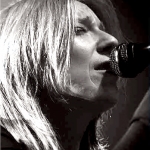
|
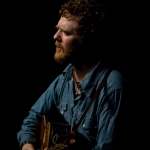
The Swell Season |
LATEST GALLERY IMAGES
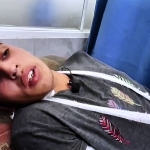
Where Israel Goes, Misery Follows 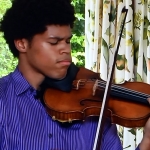
The Kanneh-Masons |
|
|


